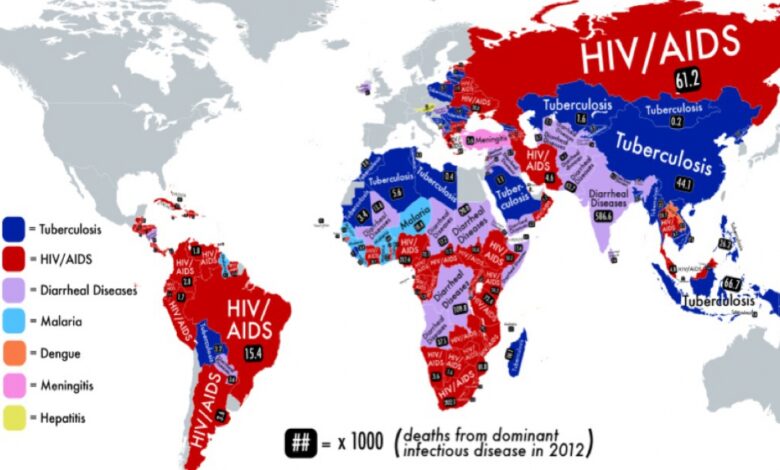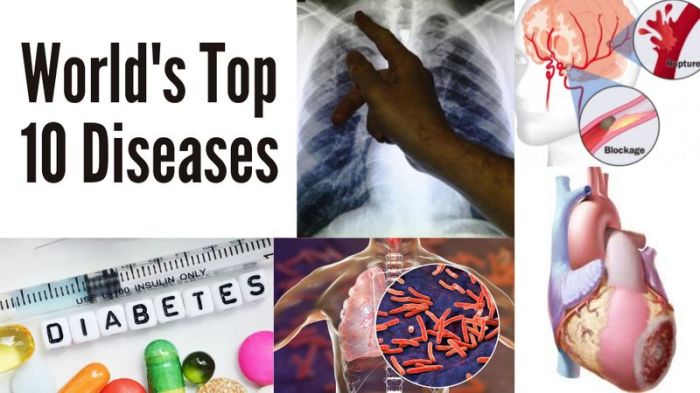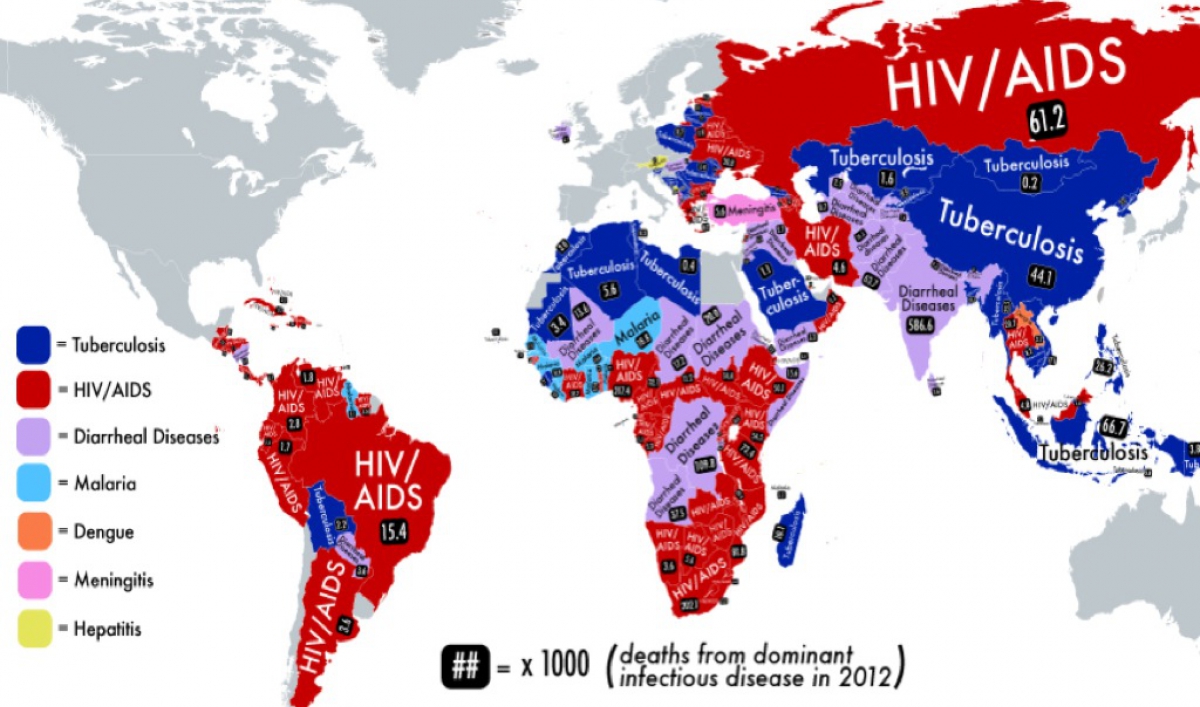
Diseases Ignored: Global Killers We Cant Afford to Forget
Diseases ignored global killers – Diseases Ignored: Global Killers We Can’t Afford to Forget – this phrase encapsulates a stark reality that often gets overshadowed by the headlines. While we celebrate advancements in healthcare and focus on chronic diseases, there are silent epidemics plaguing vulnerable populations across the globe.
These are the neglected diseases, the forgotten killers, that steal lives and cripple communities, often without a whisper of attention.
The impact of these diseases is far-reaching, extending beyond mere illness and mortality. They contribute to poverty, impede development, and perpetuate cycles of suffering. The reasons for this neglect are complex, ranging from lack of funding and research to political apathy and economic disparities.
Understanding the complexities of this issue is crucial to creating effective solutions and ensuring a future where everyone has access to quality healthcare.
The Global Burden of Neglected Diseases: Diseases Ignored Global Killers

Neglected tropical diseases (NTDs) are a group of chronic infectious diseases that primarily affect the poorest and most marginalized populations in the world. They are often characterized by high morbidity, disability, and social stigma, leading to significant economic and social consequences.
Despite their significant impact, NTDs have historically received insufficient attention and funding, resulting in a heavy burden on individuals, communities, and national economies.
The Global Impact of Neglected Diseases
NTDs disproportionately affect the poorest and most marginalized populations in the world, particularly in sub-Saharan Africa, Asia, and Latin America. These diseases are often associated with poverty, poor sanitation, and lack of access to healthcare. The global impact of neglected diseases is substantial, affecting millions of people worldwide.
Mortality and Morbidity Rates
The mortality and morbidity rates associated with NTDs are significant. NTDs can cause a range of debilitating symptoms, including blindness, disfigurement, and chronic pain. They can also lead to long-term disability, reduced productivity, and increased vulnerability to other diseases.
- For example, trachoma, a bacterial infection of the eye, is the leading cause of preventable blindness worldwide. It affects approximately 150 million people and is responsible for an estimated 1.2 million cases of blindness.
- Onchocerciasis, also known as river blindness, is a parasitic disease that can cause severe itching, skin lesions, and blindness. It affects an estimated 25 million people in 36 countries, primarily in Africa.
- Leprosy, a chronic infectious disease caused by bacteria, can cause severe disfigurement and disability. It affects an estimated 200,000 people worldwide, with the highest prevalence in India, Brazil, and Indonesia.
Socio-economic Consequences
NTDs have significant socio-economic consequences. They can lead to:
- Reduced productivity and economic growth
- Increased healthcare costs
- Social stigma and discrimination
- Reduced educational attainment
- Increased vulnerability to other diseases
“The economic impact of NTDs is substantial, with estimates suggesting that they cost developing countries billions of dollars each year.”
Factors Contributing to the Spread of Neglected Diseases
The spread of NTDs is often facilitated by a complex interplay of factors, including:
- Poverty and inequality
- Poor sanitation and hygiene
- Lack of access to healthcare
- Environmental factors, such as climate change and deforestation
- Limited access to clean water and sanitation
- Migration and population movement
Impact on Vulnerable Populations

Neglected diseases, often overlooked due to limited funding and research, disproportionately affect vulnerable populations worldwide. These diseases are characterized by their devastating impact on individuals, families, and communities, particularly those living in poverty, with limited access to healthcare, and facing social and economic marginalization.
Impact on Children
Children are especially susceptible to the effects of neglected diseases. Their developing immune systems are more vulnerable to infections, and they often lack access to essential healthcare services. For example, neglected tropical diseases like hookworm and schistosomiasis can lead to malnutrition, anemia, and cognitive impairment in children, hindering their physical and mental development.
- Malaria:A mosquito-borne disease, malaria disproportionately affects children under five, causing fever, chills, sweating, and potentially leading to death. In 2021, an estimated 241,000 children under five died from malaria.
- Trachoma:This bacterial infection can lead to blindness, affecting children in the early stages of their lives.
An estimated 1.9 million children are at risk of blindness due to trachoma.
Impact on Women, Diseases ignored global killers
Women are often disproportionately affected by neglected diseases, due to their biological and social roles. They may face higher risks of infection, limited access to healthcare, and social stigma associated with certain diseases.
- Neglected tropical diseases:Diseases like leishmaniasis, lymphatic filariasis, and onchocerciasis can cause severe health complications in women, including infertility, miscarriages, and birth defects.
- Maternal mortality:Neglected diseases contribute to maternal mortality rates, especially in low-income countries. For example, infections like syphilis and HIV can lead to complications during pregnancy and childbirth.
Impact on Marginalized Communities
Marginalized communities, often characterized by poverty, displacement, and lack of access to basic services, are particularly vulnerable to neglected diseases. These communities often lack adequate sanitation, clean water, and healthcare facilities, increasing their risk of infection.
- Leprosy:This chronic bacterial infection affects individuals living in poverty, particularly in rural areas with limited access to healthcare. The stigma associated with leprosy can lead to social isolation and discrimination.
- Chagas disease:This parasitic disease is transmitted through the feces of infected insects, commonly found in rural areas of Latin America.
Poverty and lack of access to safe housing increase the risk of infection.
It’s easy to get caught up in the drama of headline-grabbing events, like the chilling story of how an Iranian agent warned us of an impending Al-Qaeda attack, as detailed here. But let’s not forget about the silent killers, the diseases that claim millions of lives every year without the fanfare.
These are the true global emergencies that deserve our attention and resources.
It’s frustrating to see how easily we get caught up in the drama of headline-grabbing events, while silent killers like neglected diseases continue to claim lives. The recent revelations about the 9/11 Commission and the Bush administration, as reported in this article , highlight the dangers of prioritizing political agendas over public health.
We need to remember that the fight against diseases like malaria, tuberculosis, and HIV/AIDS requires sustained attention and resources, not just fleeting moments of public interest.
It’s easy to get caught up in sensational headlines about the “threat of Islam,” but the real dangers often lurk beneath the surface. Diseases like malaria, tuberculosis, and neglected tropical diseases kill millions each year, yet they receive far less attention than other, more visible threats.
We need to shift our focus to these silent killers and allocate resources accordingly to protect vulnerable populations.






